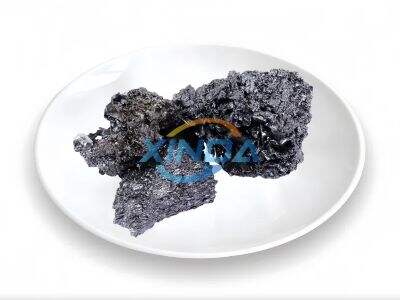“When you are making a part that has to deal with extremely high heat and pressure, what material is actually going into the component becomes extremely important.” Silicon carbide, which is incredibly hard and tough, was an ideal material for producing these tools in these regions where other tool materials would break. At Xinda, we understand the value of using quality materials to ensure our products will work great and stand the test of time. That’s the reason we use silicon carbide to build components that can withstand even the hottest of temperatures.
Advantages of Using Silicon Carbide in High-Heat Situations
One major advantage of using silicon carbide in high-temperature applications is the material can remain strong even at temperatures exceeding 2000 degrees Celsius. That makes it a great material for things like industrial ovens, gas turbines and rocket engines. And silicon carbide has excellent thermal conductivity, so it helps keep things nice and hot but also helps cool off everything it is touching. That lets parts operate at higher temperatures for longer without heat damage.
Why Silicon Carbide, a Synthetic Crystal, Was Anointed With aCGT#$.
Materials science provides many ways silicon carbide can be better than whatever came before it, but also many routes that are worth investigating to exploit its properties to extend the life of high-temperature parts. For one, sic silicon carbide is far better at hot and cold temperature extremes than silicon, which does not mean it never overheats, scales or breaks, but it definitely tolerates those swings far better. This is especially critical in high-temperature environments, where temperatures can vary widely. And, silicon carbide is extremely rust- and wear-resistant, so parts made from it can last longer and require less fixing over time.
Utilising silicon carbide for high temperature applications
Efficiency is very important in high-temperature applications. Silicon carbide helps to make things more efficient by enabling systems to operate at higher temperatures with lower losses, most notably to shrink the size of onboard charging systems and reduce the weight of an electric car to his desired 1,000 pounds. That also allows more work and less downtime to be saved, which means money in the bank for businesses. Silicon carbide materials also have a good strength-to-weight ratio and high thermal stability, which make them a good choice for high-temperature, high-precision and high-stiffness parts.
Harnessing the potentials of Silicon Carbide Materials
We are at Xinda focused on harnessing the power of sintered silicon carbide materials to produce high-temperature components that are extremely robust and have high performance. Using silicon carbide allows us to provide our customers with a high degree of quality and reliability at a cost point that is almost unbearable to look at. From aerospace, to cars, to industrial, our silicon carbide is designed for maximum performance in even the most demanding of applications. Xinda will have our high temp parts give outstanding performance.
 EN
EN
 AR
AR
 NL
NL
 FR
FR
 DE
DE
 HI
HI
 IT
IT
 JA
JA
 KO
KO
 PT
PT
 RU
RU
 ES
ES
 TL
TL
 ID
ID
 SR
SR
 UK
UK
 VI
VI
 TH
TH
 TR
TR
 FA
FA
 MS
MS
 BE
BE
 AZ
AZ
 UR
UR
 BN
BN
 GU
GU
 JW
JW
 KM
KM
 LO
LO
 LA
LA
 NE
NE
 PA
PA
 TA
TA
 TE
TE
 MY
MY
 UZ
UZ
 KU
KU
 KY
KY
 LB
LB
 SD
SD






